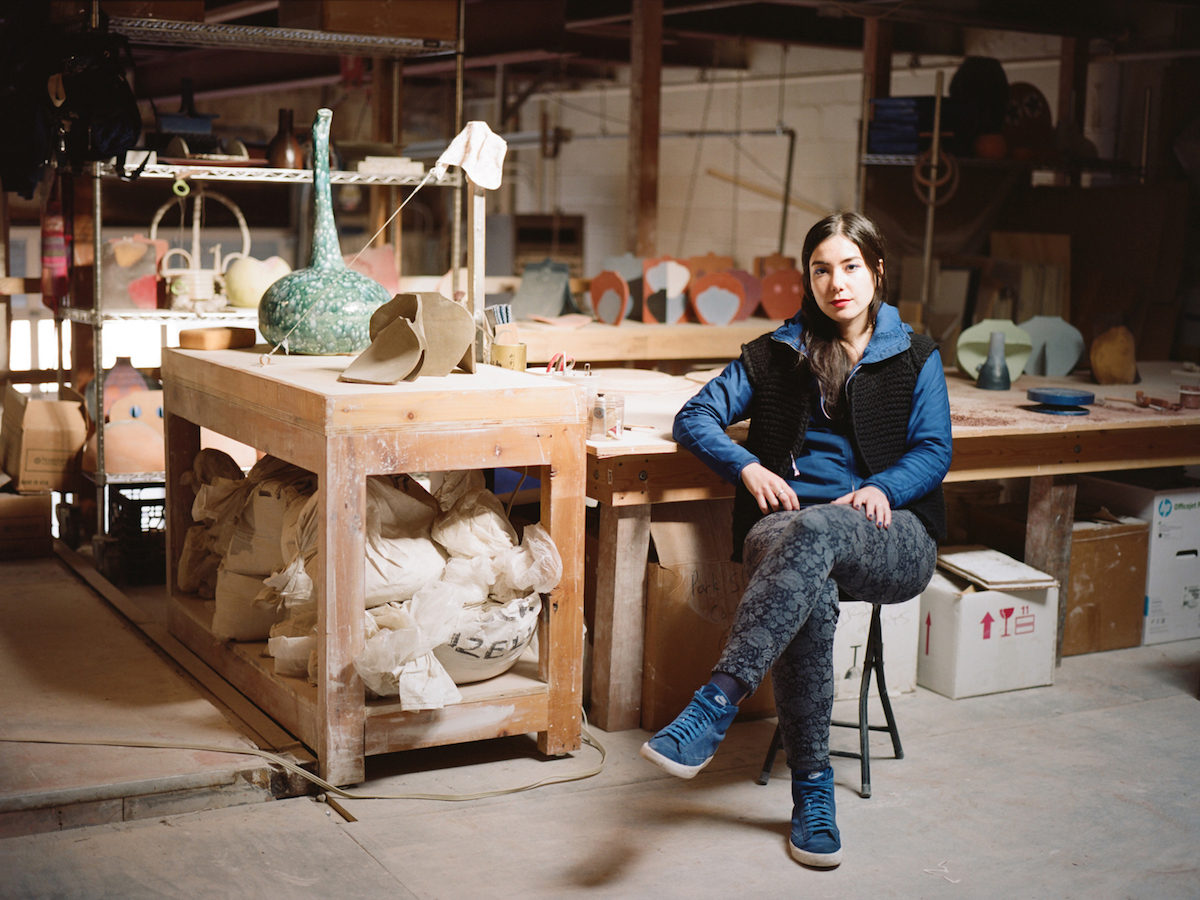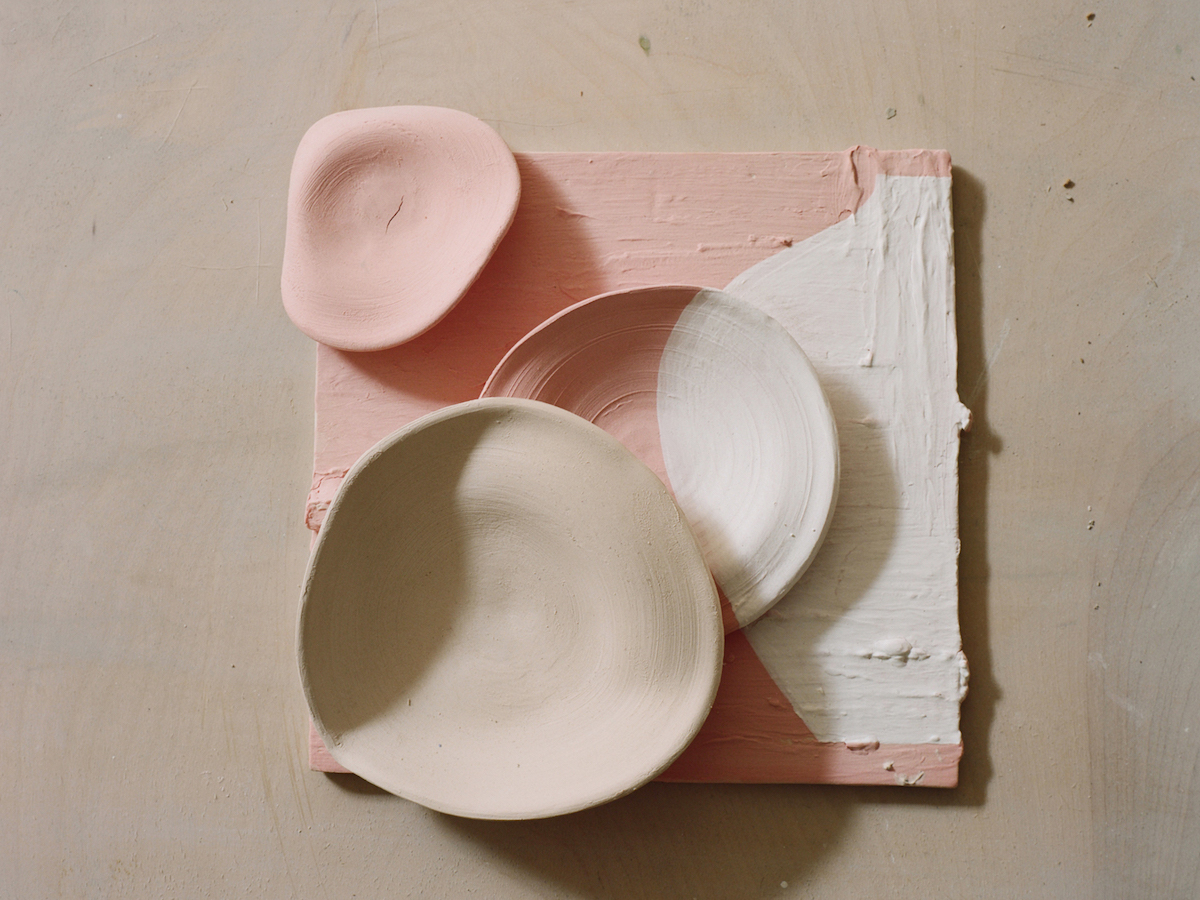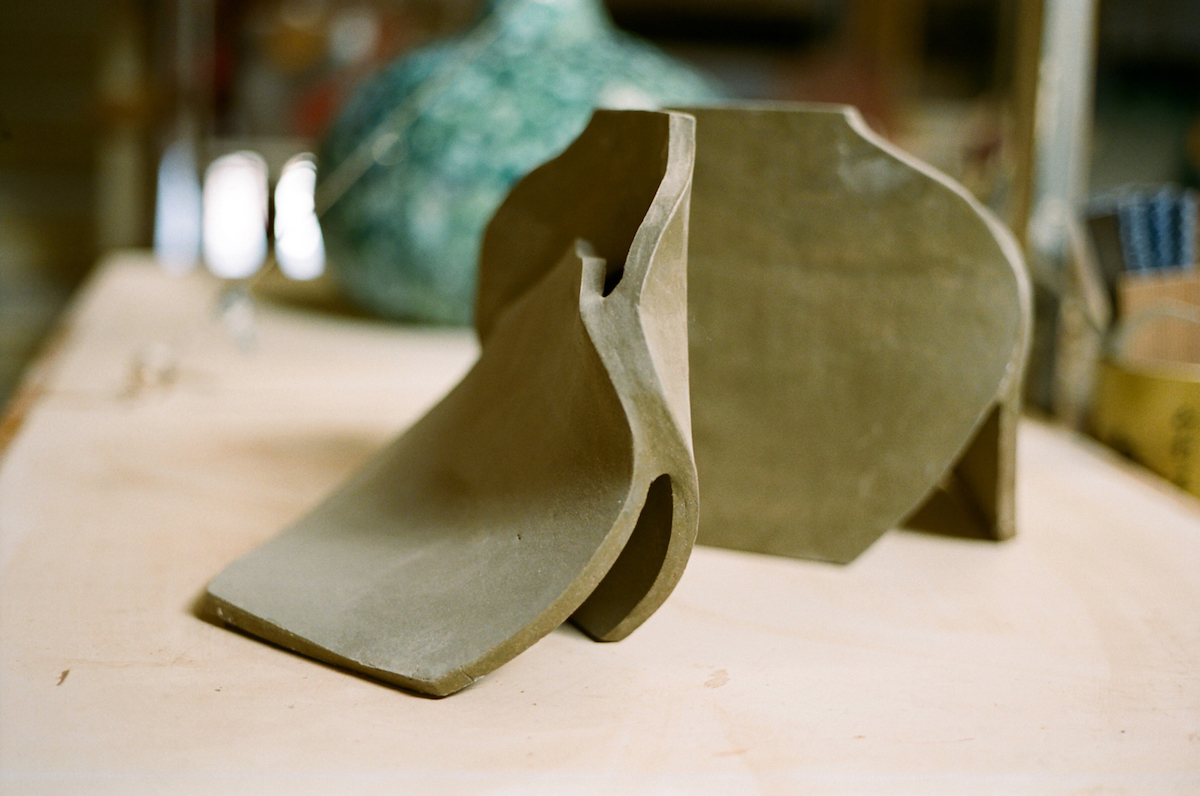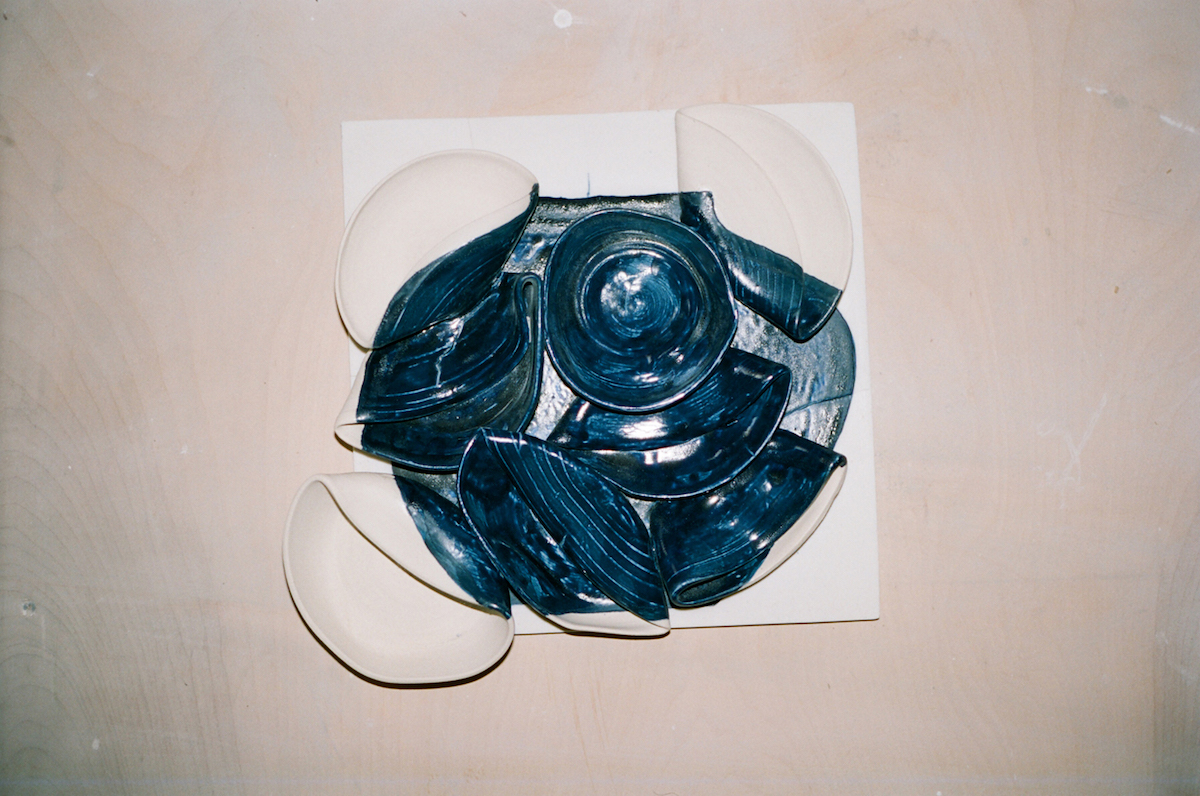Personal Space: An Interview with Ceramicist Jenny Blumenfield
Culture — 28.11.16
Words: Kathleen Hefty
Photography: Brendan Burdzinski

Ceramicist Jenny Blumenfield wants to upend the pesky stereotypes of the medium. The conversation surrounding pottery’s place in the fine art/commercial object spectrum continues to shift, as artists like Blumenfield work to push the ubiquitous medium forward — questioning and embracing its history and potential. Playful and unexpected, Blumenfield’s work challenges gravity, reinvents classic ceramic shapes, and imagines abstract forms that are truly contemporary. She continually emphasises the medium’s materiality in her elegant shapes, using a rich palette and textured surfaces that she creates by hand or leaves up to interventions from the kiln. As she prepares for a residency in the Netherlands later this year, Blumenfield showed me around her airy Brooklyn studio, where she shared her process and discussed “the temperament of the medium,” something that she has dedicated her practice to understanding, pushing, and celebrating.

Did you study painting? It seems to go so hand-in-hand with ceramics, and the [painterly surface] of your works is beautiful.
Thank you. No, I always studied ceramics. I really envied painters because they know what to do with a blank canvas and when I see a blank canvas I would be completely stuck. I always wanted to see the images on the canvas come to life much more and transform space.
How did you approach your practice after you graduated from the Rhode Island School of Design?
I came to [New York City] and was working in the secondary art market. I didn’t even think I was going to work in clay at all, but after [a while] I felt really lost and upset that I wasn’t creating work so I started working at a non-profit ceramic school in Manhattan called Greenwich House Pottery. It really helped me navigate the ceramics world. Back then it was much more of an underground scene, and I was able to connect with a lot of the older ceramicists. It was really one of the best things that happened to me.
Were you teaching there?
Yeah, I taught hand-building to children, but my primary job was more administrative. It required me to measure all the work students made, price it, share studio information and remind the students of the rules. It was ultimately a very social job, which was great because I got to interact with all the students in a more intimate setting.
Were you making work while you were in the studio?
Yeah, we received 24-hour access to the studios, a firing stipend, and materials. That’s what really helped me to do work, because during school it’s all about experimentation, and then after school — especially with ceramics because it takes up a lot of space and is extremely costly—it’s hard to justify just making for the sake of making. So by being there, I was able to create and experiment the way that I needed to. By the time I left, I really found a more clear direction of where I wanted to take my work and how to make it happen for myself.

What was that direction?
It started to move more towards flatter planes — simplifying the vessel form into two-dimensional planes. I partly did that because I wanted to make a whole new body of work relatively quickly and I didn’t have a lot of space to store the work. These pieces are all sketches for larger pieces or ideas, but I can make a lot of them without taking up too much space. It was an encouraging way to make work because I used to make larger vessel forms and those take a long time. Partly because of the time it took to make them, I felt a bit more attached to the [larger works] than some of these two-dimensional pieces. Something happened for me when the pieces became more about the idea [2-dimensional works], rather than the sentiment. Also, there is this theme of permanence vs. impermanence. The nature of clay is such that everything has the potential of breaking, and I didn’t want to make everything so precious to the point that they are no longer accessible. I want ideas just to exist and not feel like I have to do something with them.
Your flat plane pieces are fascinating. They’re almost anti-vessels.
Yeah in a lot of ways, it’s anti the standard ceramic identity or stereotype of ceramics. A lot of my frustration as a ceramicist is in the fact that when I introduce myself as a ceramicist, people often respond with ‘Oh, do you make bowls? Do you make pipes?’ Even though clay has such a wide range of expression. It frustrated me that that was the general response. Not to anyone’s fault, but in my frustration, it made me realise that I want to challenge that identity and that’s where these works came from.
Can you tell us a little bit about the women figures?
I was making a lot of comparisons between the female form and vessels and the relationship people have with objects and women. So, objectifying women and objects. It’s also about playing with the silhouette of the shape, and it was important to me to embrace the material. The clay colour is so beautiful; you don’t need to cover it. It’s like a beautiful woman that puts on way too much make up. You’re like, ‘Wait! You’re so beautiful without it; you don’t need all that.’
Where do you find inspiration regarding colour and form?
Colour is such a powerful thing. There’s so much that can be said with just colour. Unexpectedly a lot of it comes from my surroundings—colors I see throughout the city, the ways in which I see people dress, the daily choices people make. I find that inspiring, but I also look at many different things—jewelry, furniture, classic, modernist, abstract expressionism, etc. I’m even inspired by the music I listen to and what’s happening socially and culturally right now. And I think it’s important that your work is aware and responsive to what’s happening in the world.

How has your colour palette changed over time?
My early work used more traditional glazes that were very earthy and raw. As I’ve gotten older, I’ve gotten bolder with colour while also exposing the many different clays that exist in ceramics. I’m going to a residency in the Netherlands, which I’m really excited about. A lot of what I proposed was to experiment with glazes and develop my own—which is what I did in college, but unfortunately, I don’t have the time or the resources now. I want to eventually make pieces life-size, which I felt my work was moving towards in college—especially towards the end, when I was making large installations. I like the idea of creating an installation with multiple parts and then selling off those parts, so that it becomes more inclusive, where many people can be part of this experience or atmosphere. Another thing that I’ll be playing with at the residency is over-firing pieces. I like the idea of manipulating the firing to take away some of the maker’s controlled touch and allow for the forms to be more organic.
Do you have any interest in working outside of the medium within your work?
Yes, definitely. If I want to continue to work in clay, I need to start challenging the limits of the material by introducing a new vocabulary.
The lines between design, art, and craft are blurring right now, and I think that there’s curiosity about how to further blur those lines — or just get rid of them completely. Because those lines are a construct. They’re not real. It is critical for me to continue to say that I am a ceramicist because I am working in the material. I am aware of the stereotypes and because I am trying to change those stereotypes I need to operate within them.